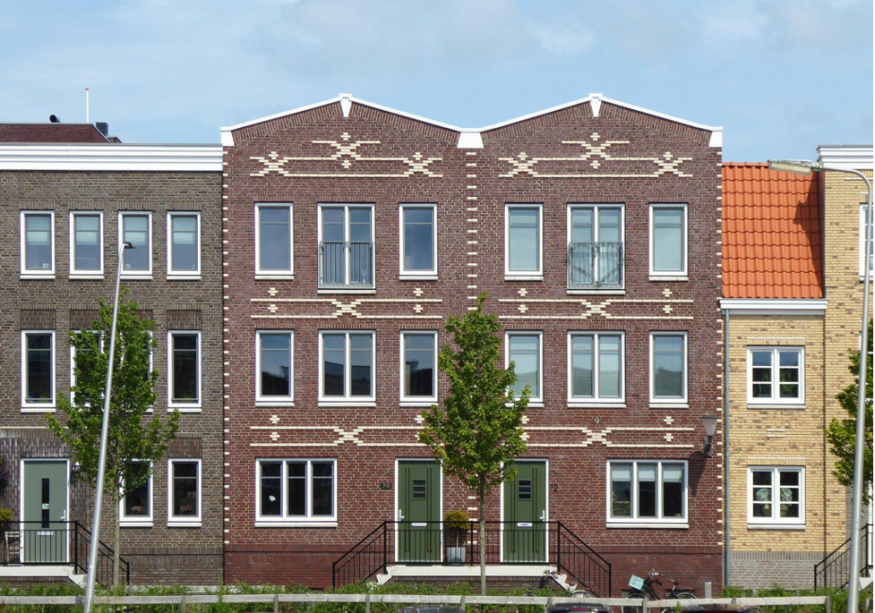
In the pursuit of a sustainable future, retrofitting has emerged as a transformative approach to revitalizing old buildings.
Rather than demolishing and rebuilding, retrofitting focuses on upgrading and optimizing existing structures to reduce their environmental footprint.
As an added benefit, retrofitting often proves to be a cost-effective solution that respects the historical significance of buildings while aligning them with modern sustainability goals.
According to professionals, this process not only minimizes waste but also contributes to energy savings, thereby creating green powerhouses out of outdated structures.
What Is Retrofitting?
Retrofitting involves making alterations to an existing building to improve its energy efficiency, lower emissions, and align it with green standards.
This process often includes upgrading insulation, installing energy-efficient lighting and HVAC systems, implementing renewable energy sources, and enhancing water conservation features.
While it sounds similar to renovation, retrofitting is more focused on sustainability and environmental impact rather than aesthetic changes.
Why Retrofit Instead of Rebuild?
● Preservation of Cultural Heritage: Many older buildings carry cultural and historical value. Retrofitting allows us to preserve these aspects while making them more sustainable.
● Reduction of Construction Waste: Demolition and construction contribute significantly to waste. By retrofitting, we reduce the demand for new construction materials and minimize landfill contributions.
● Cost-Effectiveness: Retrofitting is often less expensive than a complete rebuild. Existing structures provide a foundation, allowing resources to be invested directly into energy-efficient upgrades.
Benefits of Retrofitting Old Buildings
Retrofitting offers numerous environmental, economic, and social benefits that can turn any structure into a green powerhouse.
1. Enhanced Energy Efficiency
One of the main goals of retrofitting is to reduce energy consumption. By upgrading insulation, windows, and HVAC systems, retrofitted buildings can achieve substantial energy savings. This not only cuts down on operational costs but also lowers greenhouse gas emissions.
For example, replacing single-pane windows with double or triple-glazed alternatives can reduce energy loss significantly, ensuring a more comfortable indoor environment while lowering heating and cooling needs.
2. Integration of Renewable Energy
Retrofitting allows for the installation of renewable energy sources, such as solar panels and wind turbines. Even old buildings can generate clean energy, turning them into producers rather than consumers.
Solar panels, for instance, can be added to rooftops to generate electricity, while geothermal heat pumps can provide sustainable heating solutions. These renewable energy options can often offset a building's energy needs, making them a viable option for both urban and rural retrofitting projects.
3. Improved Indoor Environmental Quality
Older buildings may lack adequate ventilation or use materials that compromise indoor air quality. Retrofitting addresses these issues by installing efficient HVAC systems and utilizing eco-friendly building materials. This not only improves the air quality within the building but also reduces the risk of health issues caused by mold, allergens, and poor ventilation.
4. Water Conservation Features
Retrofitting also emphasizes water conservation by integrating systems that reduce water waste. Installing low-flow toilets, efficient plumbing fixtures, and rainwater harvesting systems can significantly cut down on water usage.
Water recycling systems can be added to reuse wastewater for non-potable purposes, such as irrigation or flushing toilets, further reducing water consumption.
5. Long-Term Cost Savings
Although the initial investment in retrofitting might seem high, the long-term cost savings make it a financially sound choice. Reduced energy and water costs, combined with lower maintenance expenses, contribute to substantial savings over time.
These benefits not only offset the initial costs but can also make a retrofitted building more attractive for resale or rental, increasing its value in the real estate market.
Key Considerations in Retrofitting for Sustainability
While retrofitting brings many benefits, it's essential to approach it strategically to maximize its environmental impact and economic returns.
1. Conduct an Energy Audit
Before beginning any retrofitting project, an energy audit can identify areas that need improvement. This audit assesses the current energy performance of the building, highlighting inefficiencies and opportunities for energy savings. By understanding a building's unique energy profile, one can tailor the retrofitting process to address specific needs.
2. Focus on Building Envelope
The building envelope; walls, roofs, and windows, plays a critical role in maintaining indoor temperatures. Upgrading the envelope through better insulation and window replacements can drastically reduce heat loss in winter and heat gain in summer, lowering energy demands year-round.
3. Prioritize Renewable Energy
Whenever possible, incorporating renewable energy sources into the retrofit plan is beneficial. Solar panels, for example, are widely available and can be installed on rooftops or integrated into the building design. Wind turbines or geothermal heat pumps may also be viable options, depending on the building's location and infrastructure.
4. Use Sustainable Materials
The choice of materials is vital in creating an eco-friendly building. Using recycled, non-toxic, or low-emission materials can enhance the sustainability of a retrofitted building. Furthermore, sustainable materials contribute to a healthier indoor environment and can be locally sourced to minimize transportation emissions.
5. Leverage Technology for Smart Building Management
Modern technology such as AI can turn a retrofitted building into a smart building. Implementing AI and energy management systems that monitor and optimize energy use helps in achieving greater efficiency. These AI systems can provide real-time data on energy consumption, allowing for adjustments and improvements that contribute to ongoing sustainability efforts.
Conclusion
Retrofitting old buildings offers a sustainable and practical way to reduce environmental impact while preserving historical architecture. By upgrading energy efficiency, integrating renewable resources, and adopting smart technologies, we can transform outdated structures into green powerhouses that contribute to a more sustainable future. As cities and communities look to reduce their carbon footprint, retrofitting stands out as a pathway that aligns preservation with progress. With the right planning and resources, even the oldest buildings can become beacons of sustainability.










